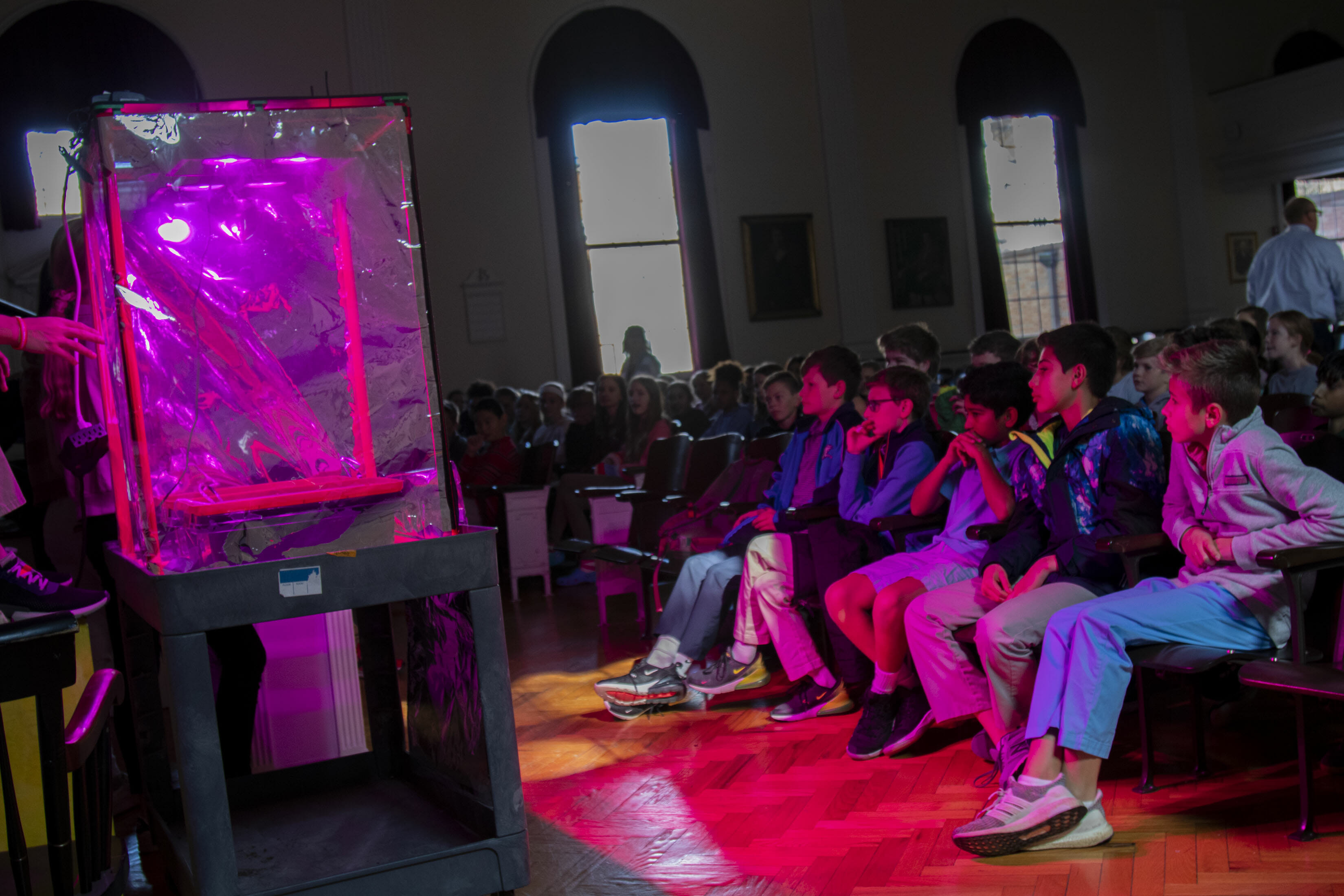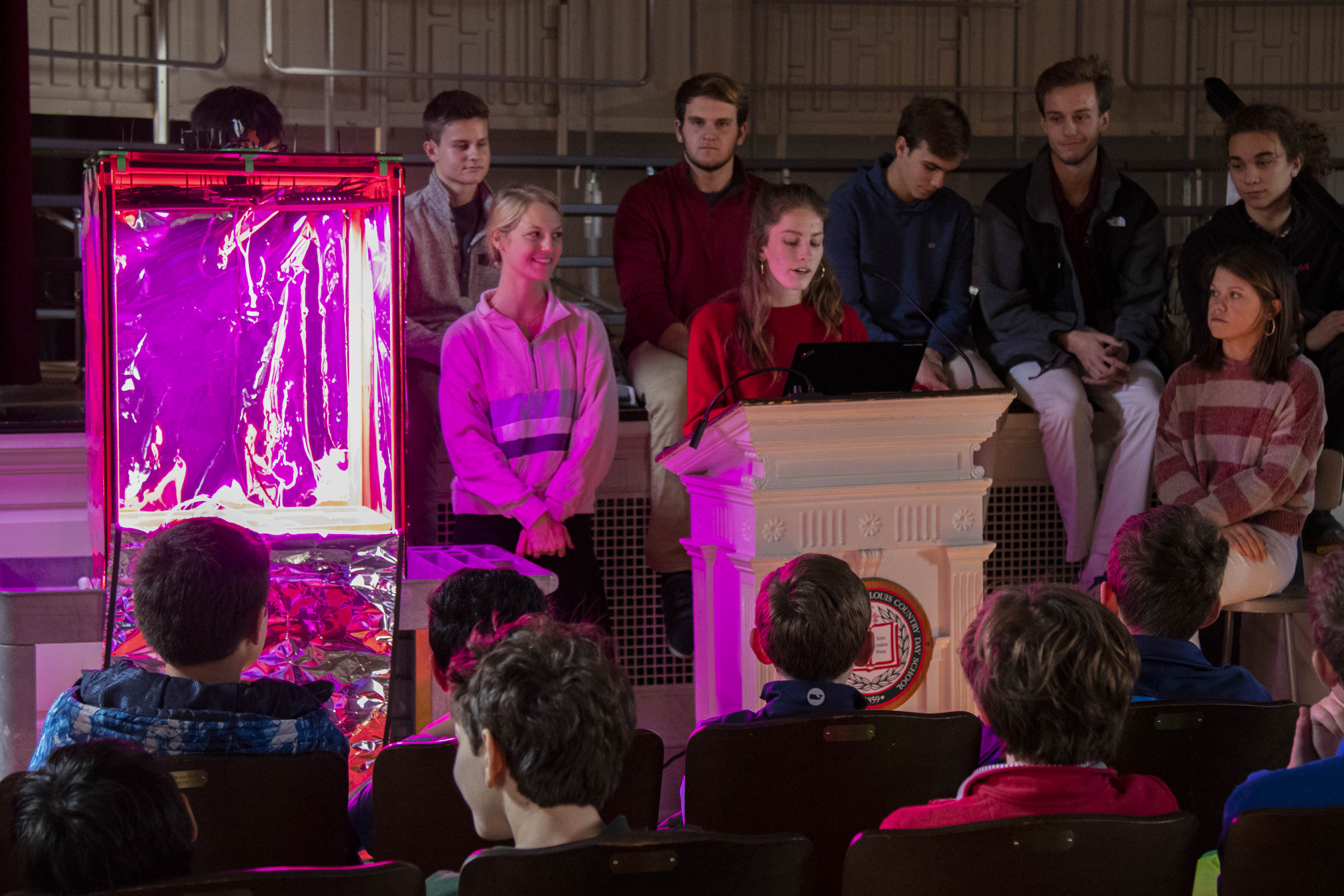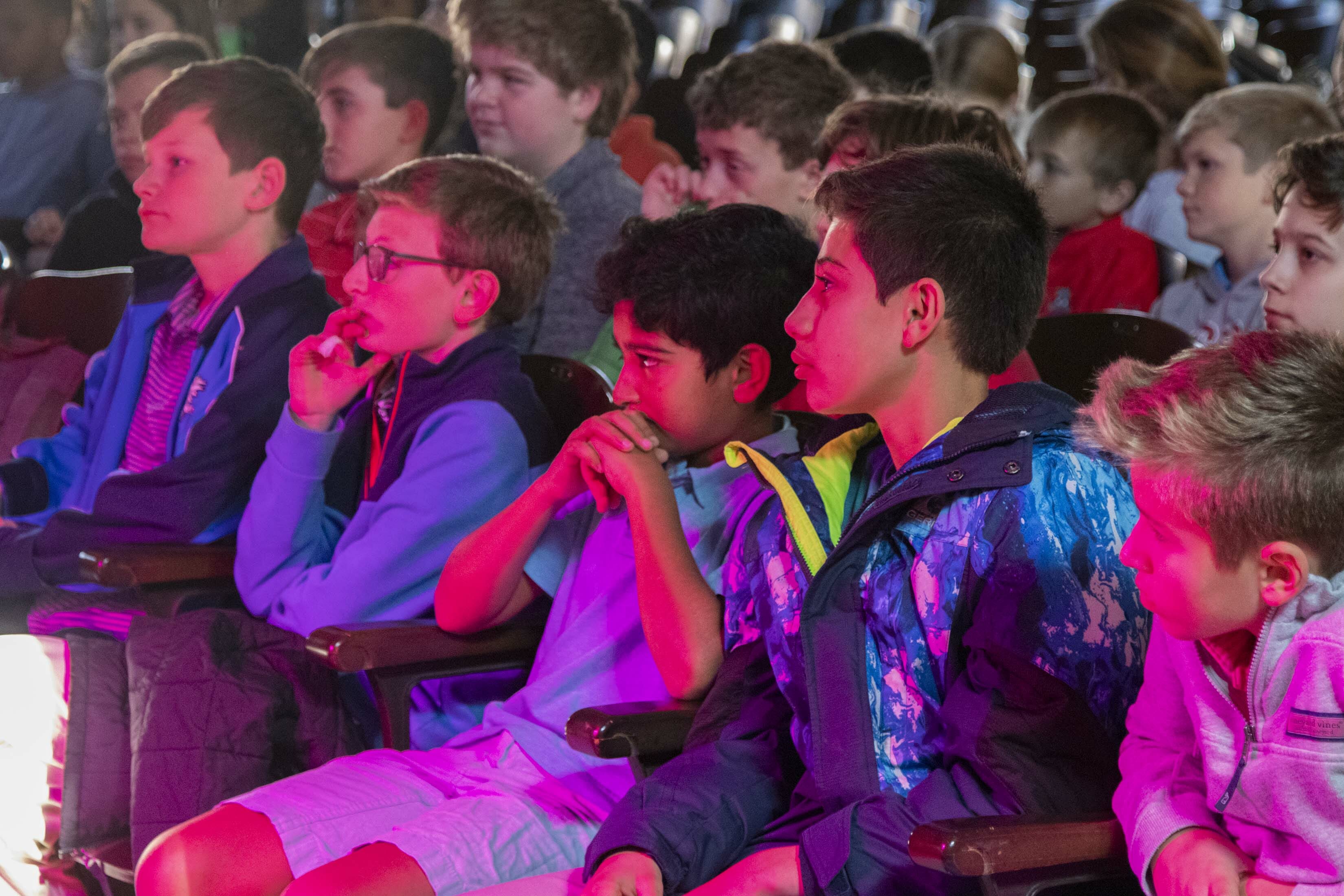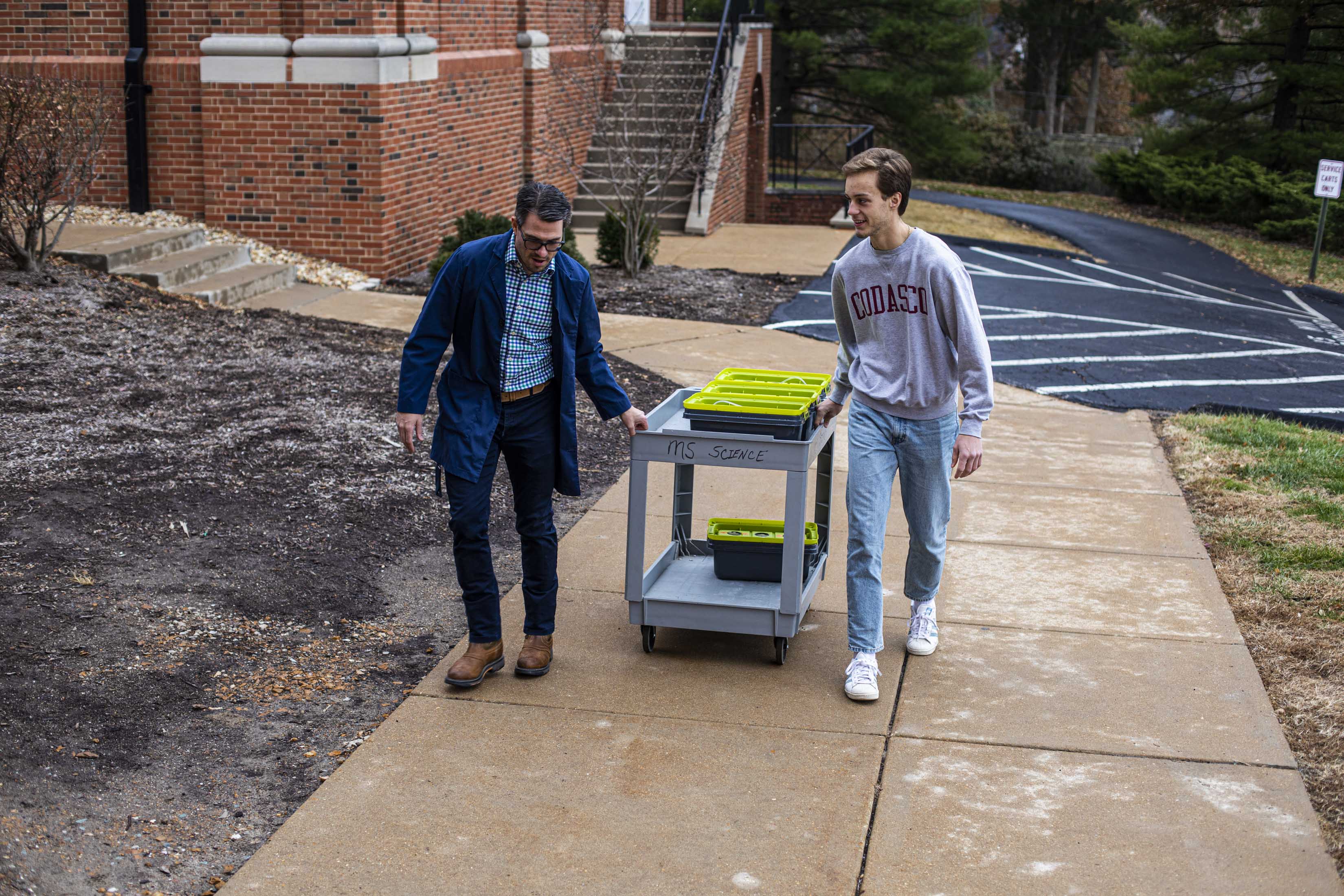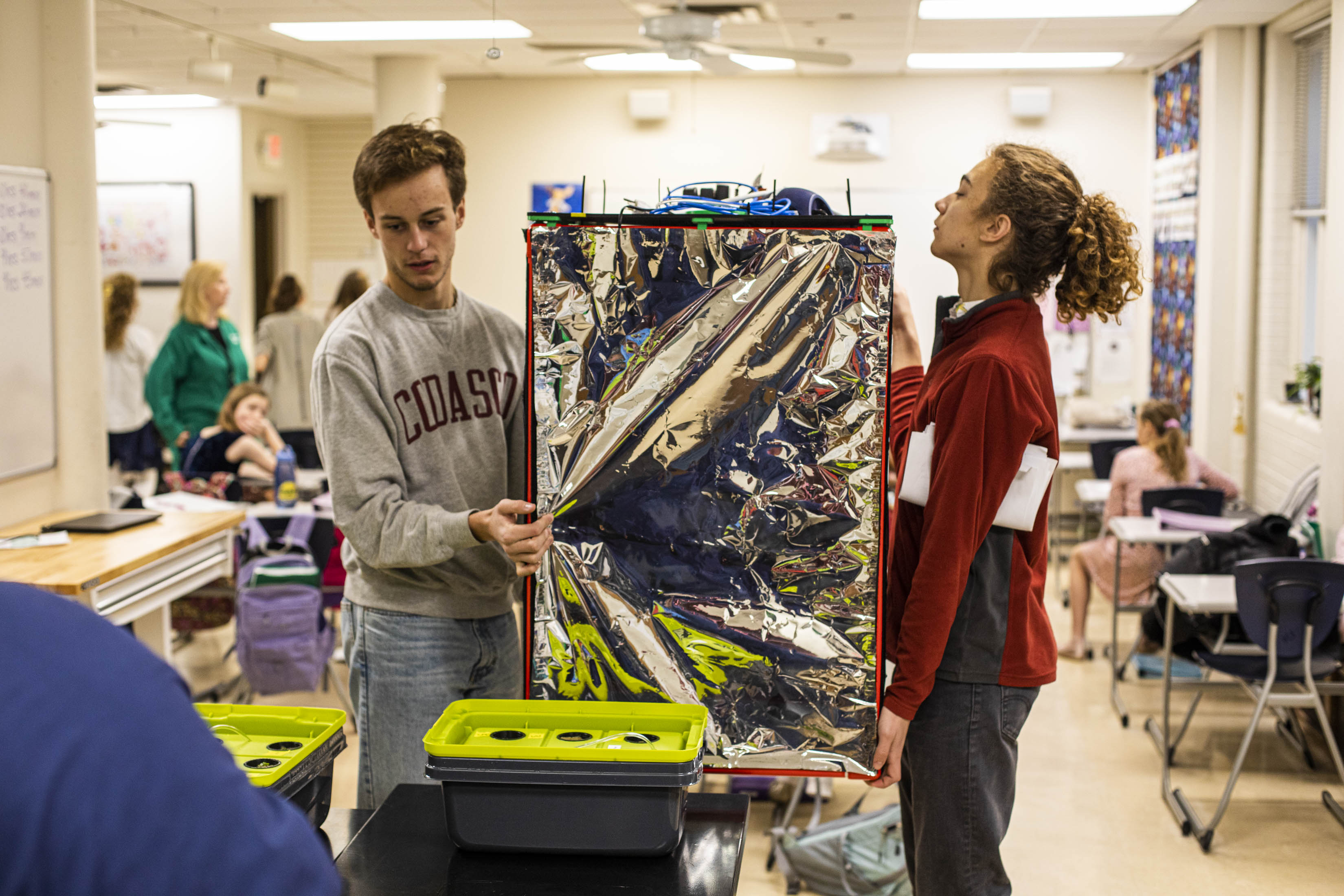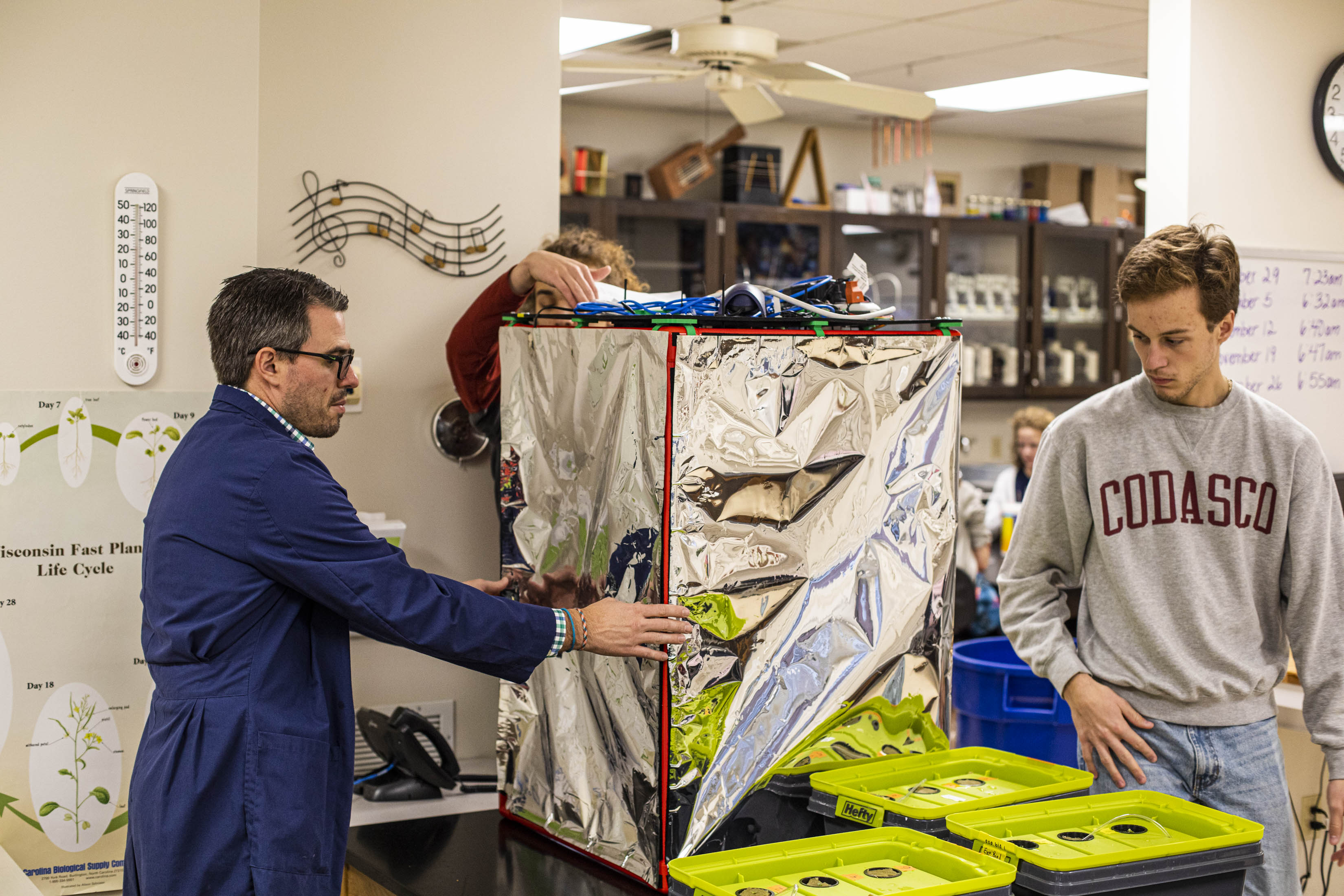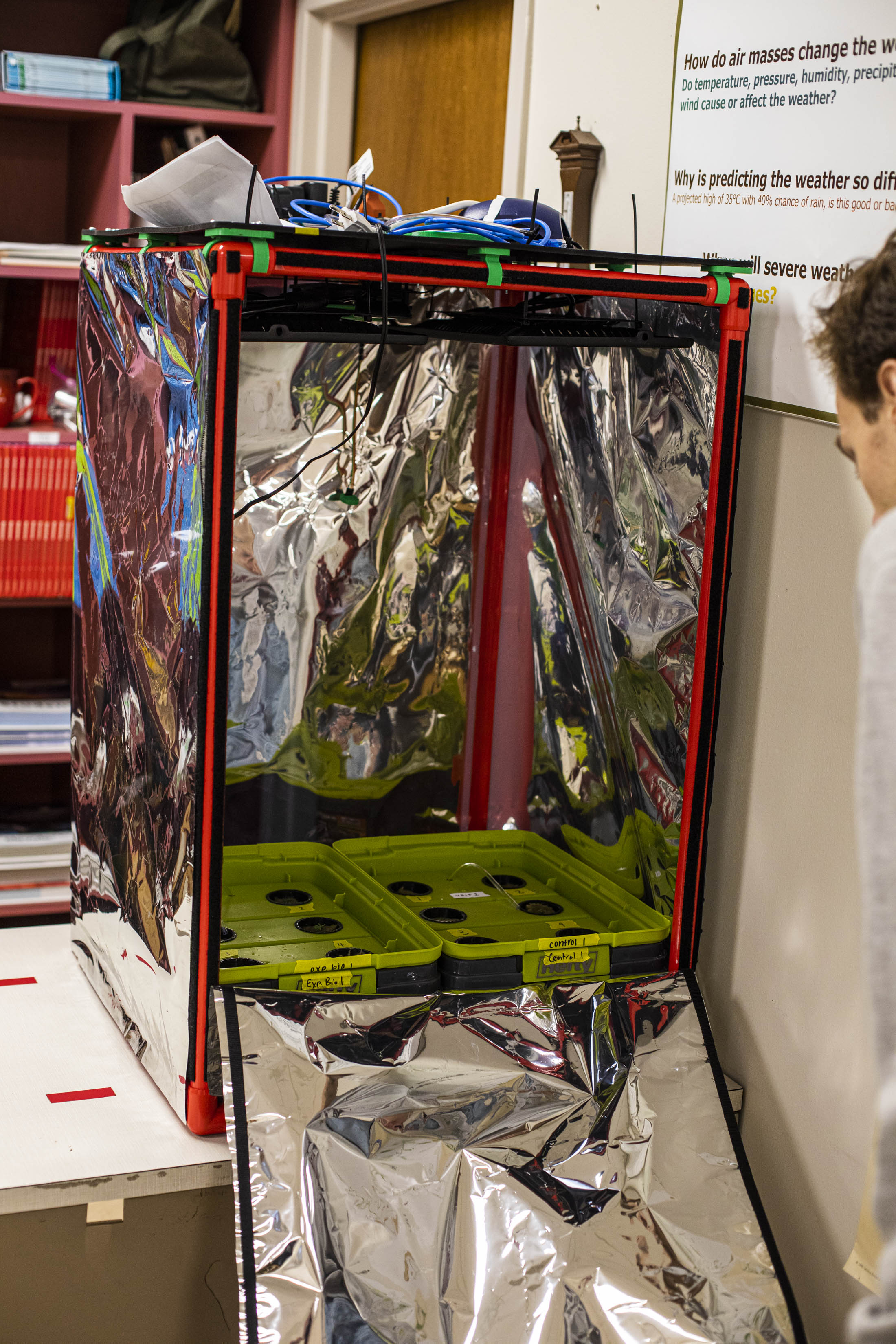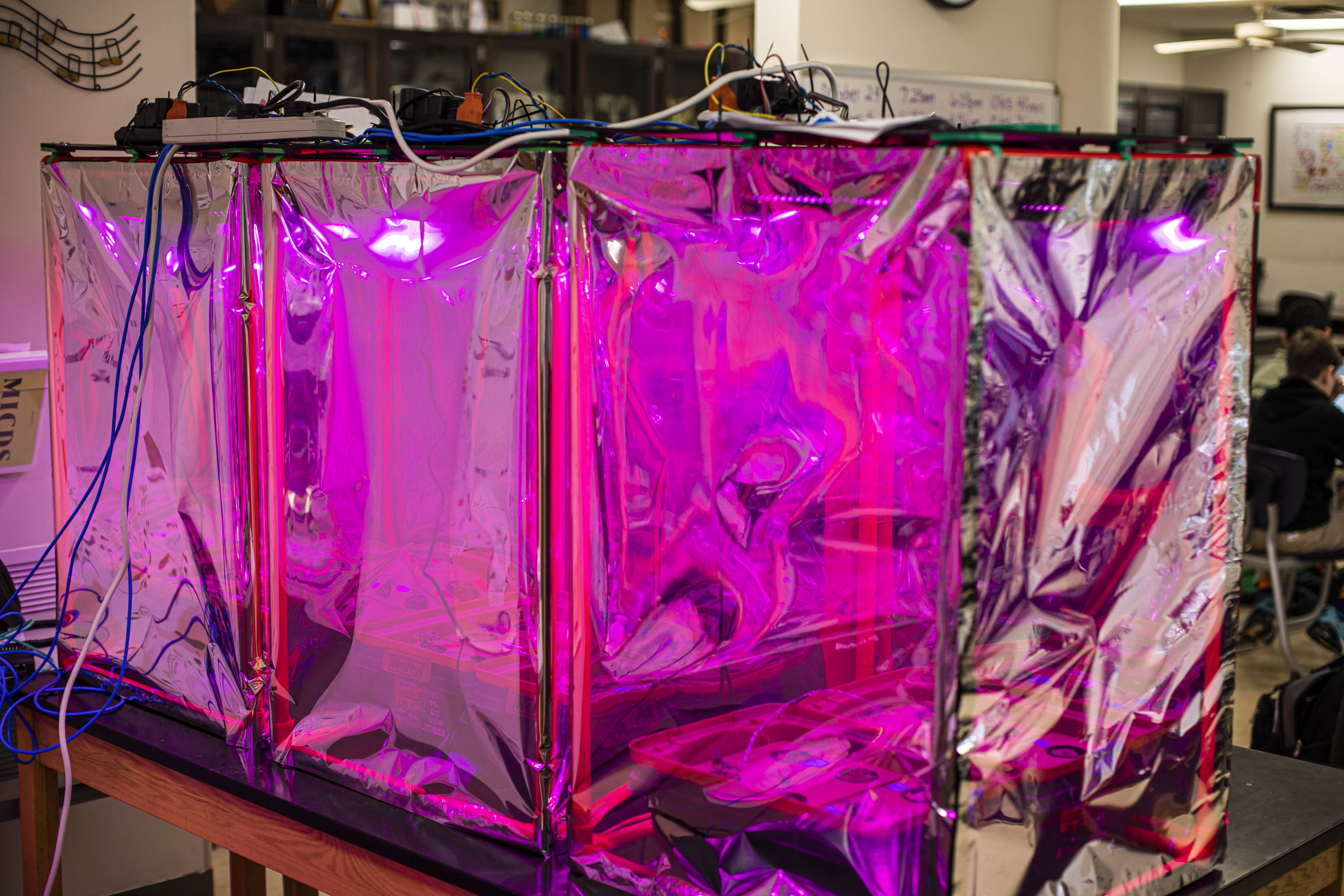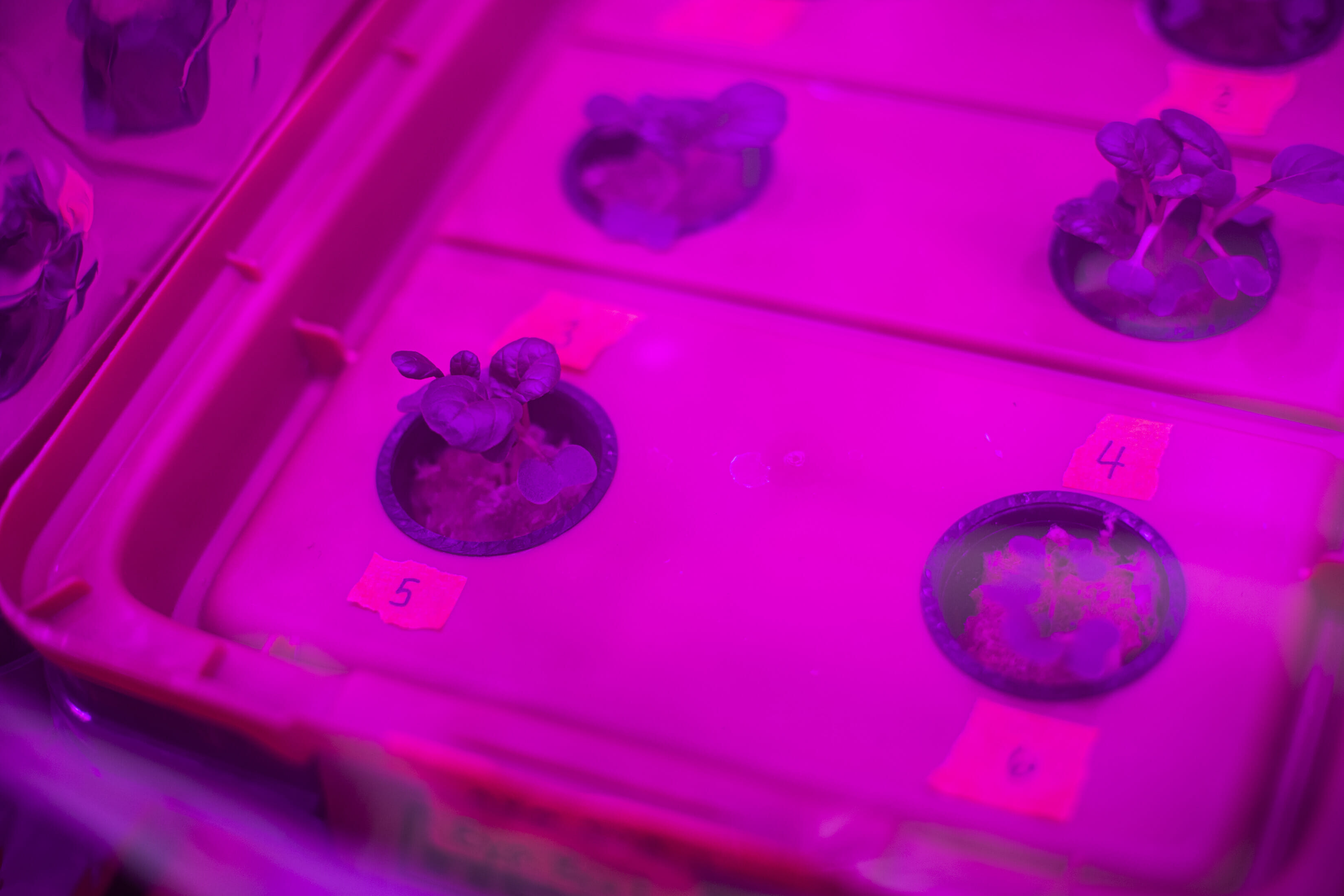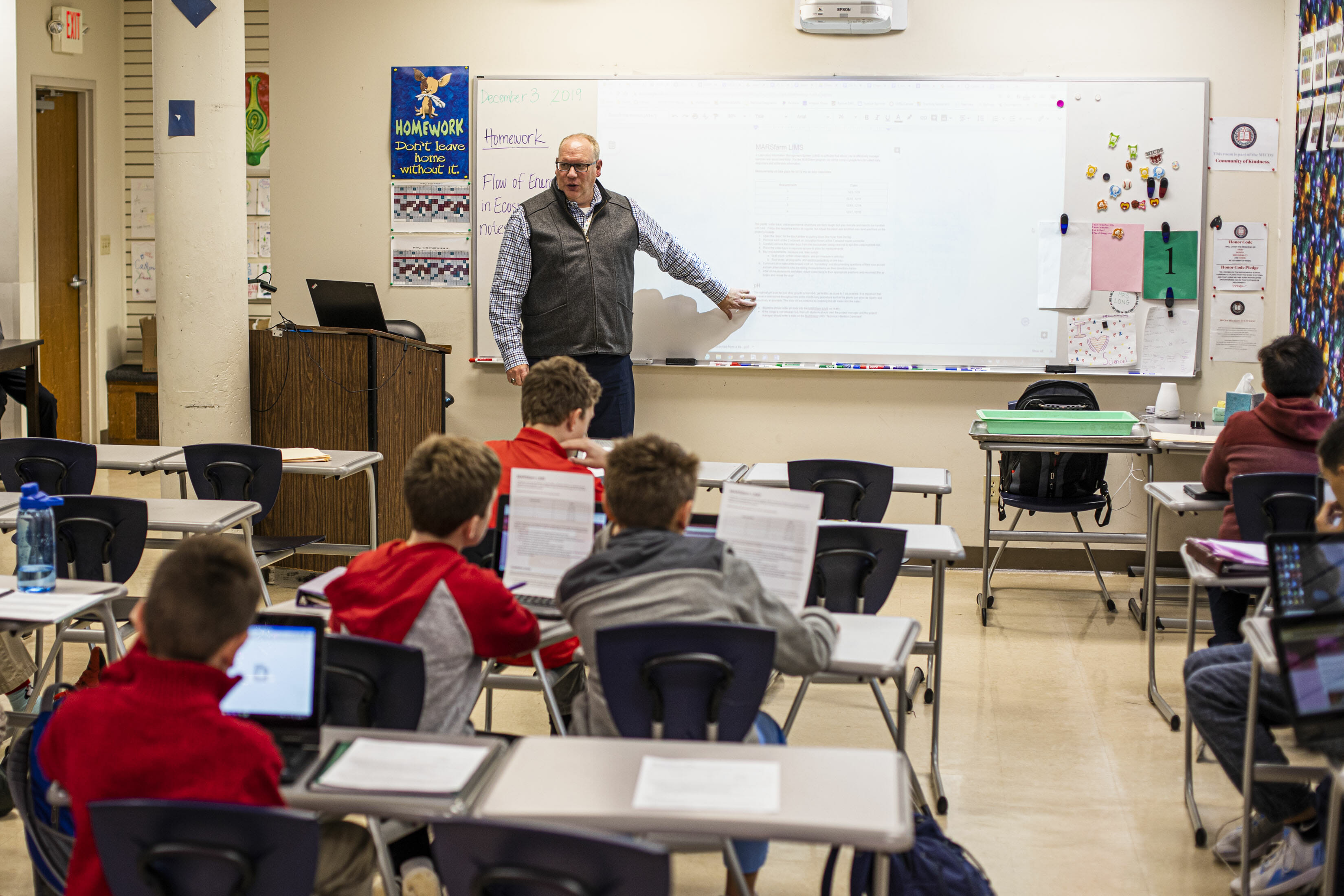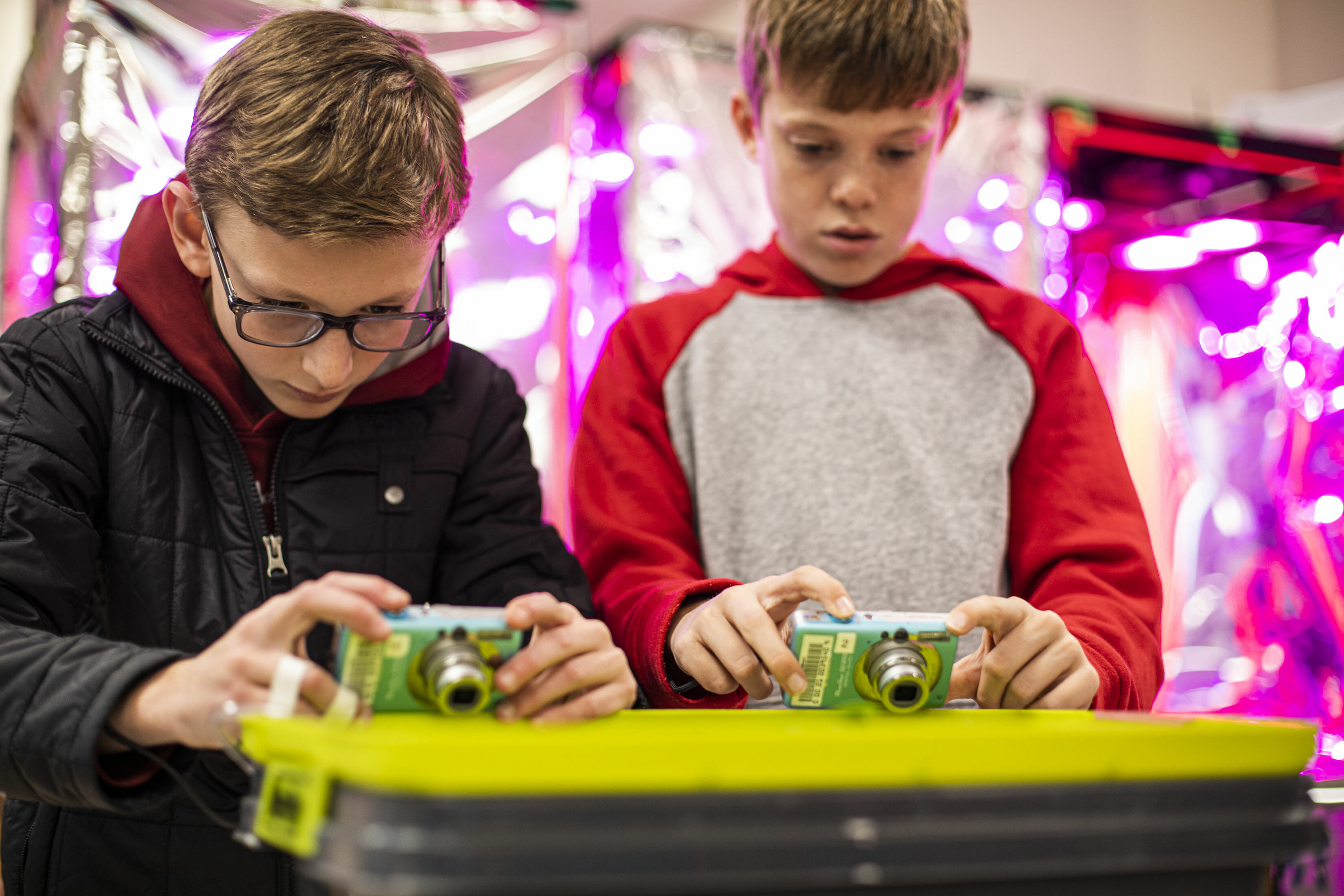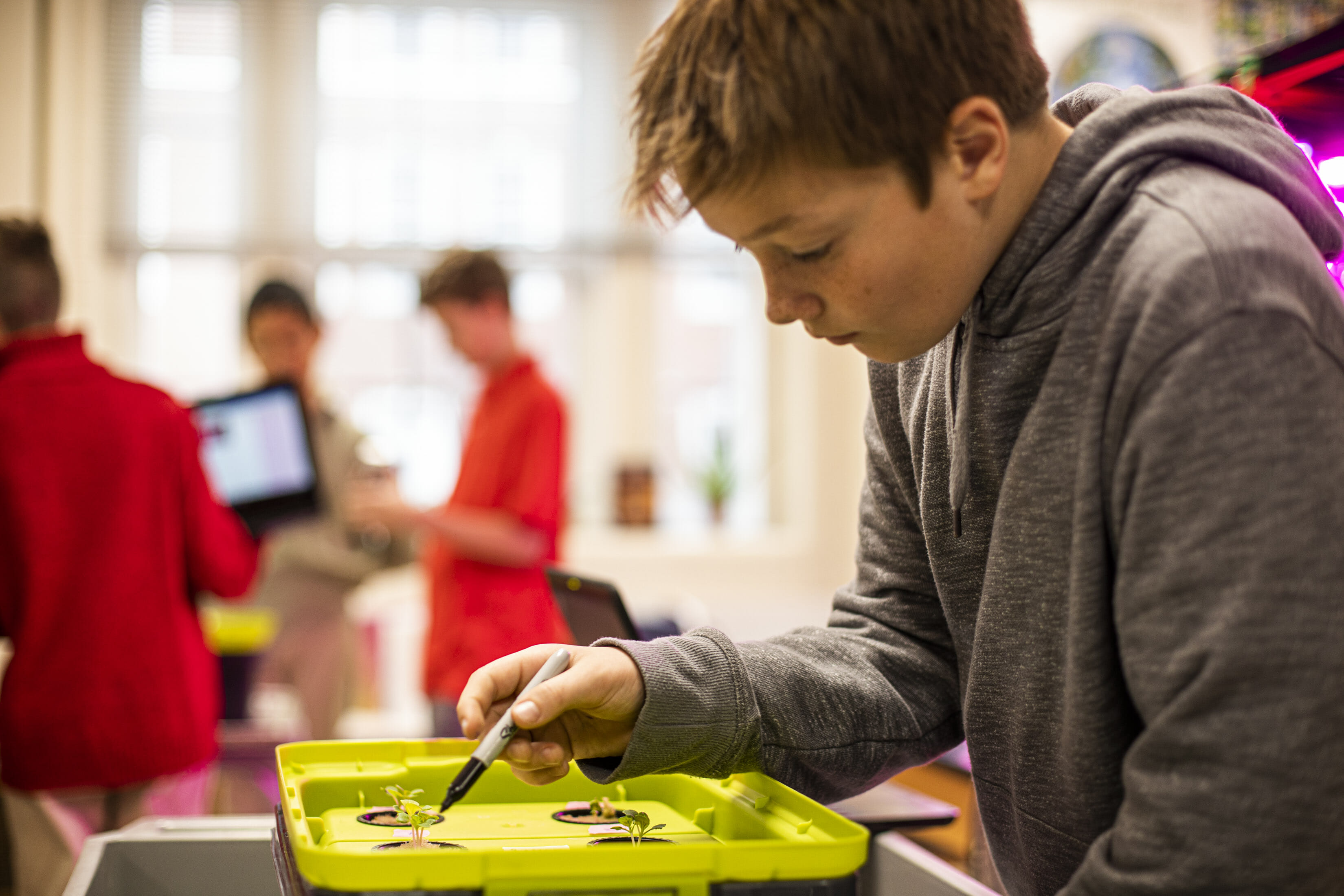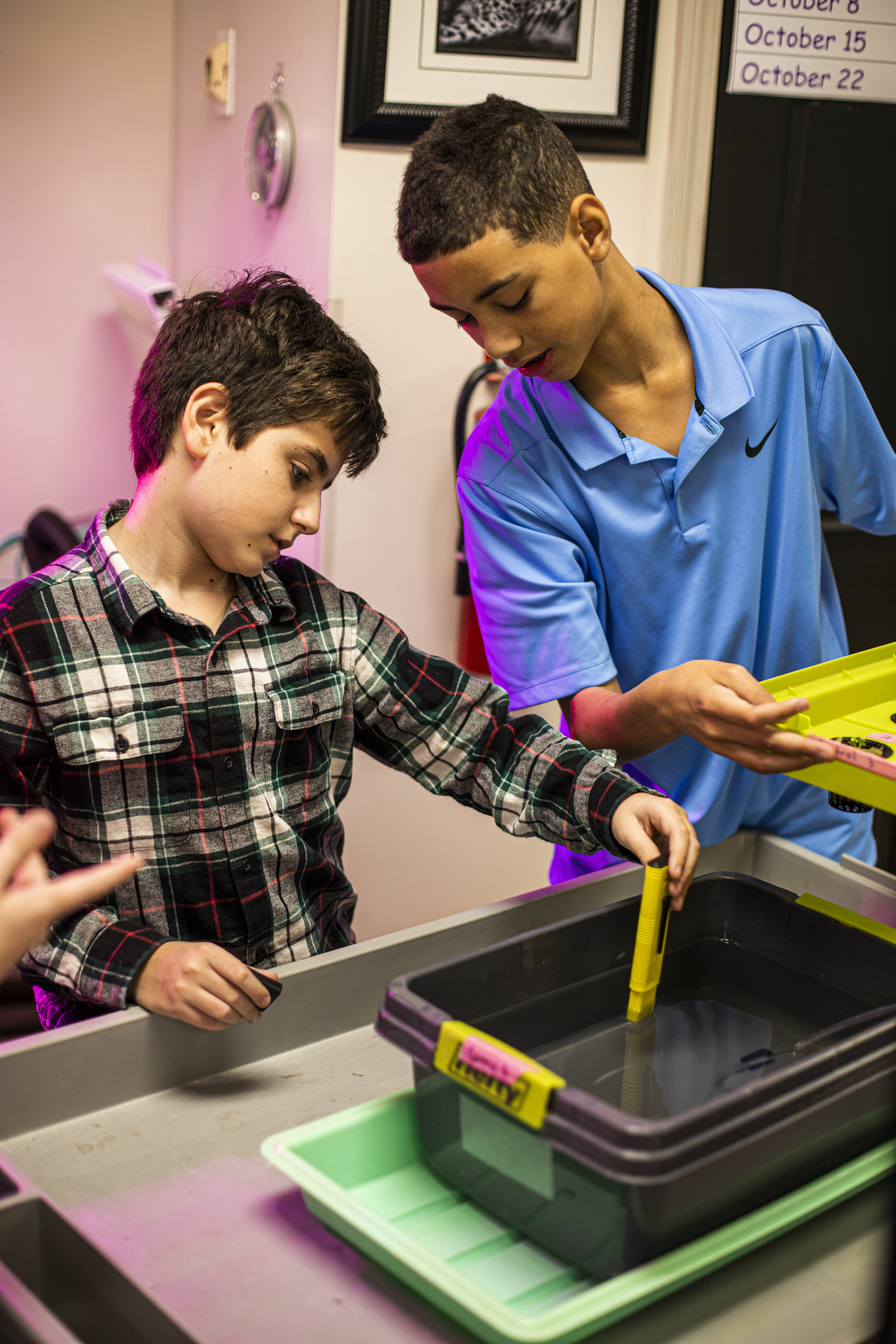Students in the Autotroph Biological Design course in the Upper School Plant Science Strand have recently been contemplating life on Mars, specifically plant life on Mars. Plants are vital for all living things, and solving the problem of plant growth on Mars could be the secret to creating a suitable habitat for humans.
The MICDS MARSfarm program begins with a simple question: Have you ever wondered about growing food in space or colonizing Mars? If you can grow plants on Mars, a harsh extraterrestrial environment, then you can grow plants anywhere. If plants can be grown anywhere, then anywhere can be transformed into a suitable habitat for humans.
Upper School students are working hard to find a solution. They have assembled five bio chambers to replicate conditions on Mars and planted bok choy seedlings inside of them. The team of Upper Schoolers has students serving in roles of biological engineer, electrical engineer and mechanical engineer, with each group of engineers responsible for specific sections of the project. They introduced the MARSfarm program to Middle School scientists after they constructed the first chamber.
A biological engineer explained that the experiment has a variety of chambers that use different wavelengths of light, so students can research which wavelength is optimal for growing produce. In a resource-scarce environment, it’s important to be efficient.
An electrical engineer talked about how the bio chambers use small computers, lights and fans to control the growing environment and record temperatures. Small cameras allow for remote monitoring, which is very important if you’re on a planet that requires a full airtight astronaut suit to pop over to check the garden.
Finally, a mechanical engineer talked about the materials required to build the bio chambers and the process of assembling them.
To simulate the remote monitoring phase that would be required in the real world, they deployed the bio chambers to a “remote location,” otherwise known as the Middle School Science wing. They trained and collaborated with “remote researchers,” otherwise known as MICDS 6th graders. The 6th grade scientists are serving as stand-in astronauts to study plant growth, collect data and manage the bio chambers. If all goes well, the plants will be harvested soon and Lower School students will help with taste-testing for further data collection on flavor and nutrition.
Upper School Science Teacher Paul Zahller shares, “The MICDS MARSfarm is focused on developing a long-term vision of identifying the most suitable conditions for crops in a Martian environment. The design and construction of innovative hydroponic plant growth chambers are centered on using plants to sustain a continuous vegetarian diet for astronauts and provide air revitalization. Additionally, the team will provide recommendations and secondary applications for sustainable farming on Earth. Success on this project will help inform commercial-ready technology for sustainable farming.”
